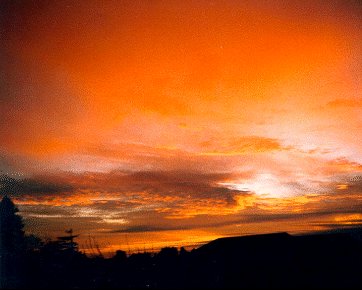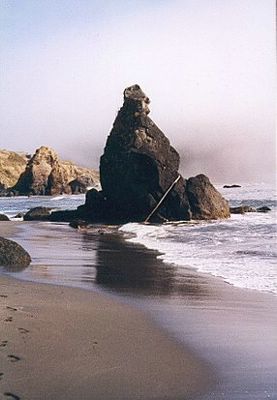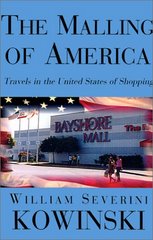War in Iraq has revived feelings and memories of past wars, particularly Vietnam, as it has repeated particular elements and tragic patterns. These have resulted in types of activism with roots in prior wars, such as peace demonstrations and the G.I. Rights Hotline. But one facet of it has been starkly different---so much so that reaction has oscillated between shocked outrage and benumbed denial.
The first round of photographs from Abu Ghraib prison led to revelations that American soldiers and perhaps civilians took part in torturing prisoners, and that acts that are internationally defined (and banned) as torture as well as severe violations of human rights were to an as yet unknown extent matters of U.S. administration policy. Certainly, the President’s counsel, who is now the U.S. Attorney General, sanctioned torture as an instrument in the war on terror. The Geneva Conventions, previously sacrosanct to all armed forces in the world, at least officially, were violated with impunity.
In one way or another, people have voiced their disbelief, their despair and their anger that they should even need to oppose torture conducted by their own government.
So to actively oppose torture and violations of human rights and civil rights at Guantanamo Bay Prison as well as in Iraq perhaps requires a different set of skills and attitudes than other forms of protest. It may require a particular kind of commitment.
There is a very small group in Humboldt County who are trying to do something that’s never been done: to go to Guantanamo Bay prison for a week. They want to visit with the prisoners, and their captors.
They represent an important though often overlooked source of strength and activity for various peace-oriented efforts locally: the Humboldt Friends Meeting, part of the Society of Friends, popularly known as the Quakers.
There are six in this particular group. I know one of them quite well: my partner, Margaret Thomas Kelso. (Apart from my keen reportorial instincts, this is how I first learned about them.) The others are Andrea Armin-Hoiland, Karin Salzmann, Dr. Richard Ricklefs (the legendary physician in Hoopa), Dr. Fred Adler and his wife, Carol Cruickshank.
I’ve focused here on Fred and Carol, not only because Carol first proposed this idea, but because their story represents a kind of commitment that has meant they have made life decisions about career and relationships based in large measure on their convictions about peace and human rights. In this, they represent more than the other six, but many I’ve met or know something about in Humboldt, particularly those involved in the G.I. Rights Hotline.
But they also suggest a way of approaching this commitment that is informed by their involvement in Quaker meeting. What follows is largely taken from a story I did for the North Coast Journal. Most of it was about the G.I. Rights Hotline, and the story just got too long to include this section on the Guantanamo group. I’m adding this introduction, and just a little more about the meeting of this group I attended.
It was on a Sunday afternoon at Fred and Carol’s house in Arcata, in a large room with panoramic view. The room was largely empty except for a grand piano, and a smaller piano at one end. Fred Adler’s music will become important to the story.
What struck me about this meeting was the time and attention the group paid to their feelings about what they were doing, and what it was doing to their lives, as well as about strategies and tactics for going forward. They talked about how to deal with the deeply disturbing facts they had to confront, and how to maintain an attitude, as one put it, of “joyful action” when a lot of what was happening fed a sense of hopelessness.
This was not simply on a level of feelings, or a psychological level, although that would be different in itself from what I remembered about activist meetings, when an unquestioning militant attitude was as expected among peace advocates as among soldiers. The result of that was often a lot of shadow release and acting out, with nobody understanding why. But in this group, spiritual resources were also being called upon in a particular way.
Fred and Carol were concerned that my article not be so much about them. I’m sure they would prefer that I write mostly about conditions at Guantanamo, and the subject of torture. I’ve added a few links at the end of this piece, to articles and information that says more than I could in this space on those subjects. But learning a little more about how these two Humboldt citizens came to commit themselves to this cause I believe is also valuable.
Dr. Fred Adler was one of the first group of volunteers taking shifts on the G.I. Hotline in Arcata. As an emergency room physician at Redwood Hospital in Fortuna and other area hospitals who also practices at the K’ima:w Medical Center in Hoopa, Fred keeps an eye on the Hotline’s medical cases.
Fred is also involved in an effort begun by his wife, Carol, that is a specifically Quaker endeavor: an ongoing attempt to visit prisoners of the war on terror inside the Guantanamo Bay Prison in Cuba.
The group of six Humboldt Meeting members met this summer with Representative Mike Thompson, to ask him to accompany them to Guantanamo. “We were prepared to present quite a bit of information to him about Guantanamo Bay,” Carol said, after a recent meeting of the group at their home. “But he was very well informed on the issue. He said he didn’t want to accompany us, he had other priorities, but he would find out if it was possible for us to get there.”
In fact, Thompson wrote a letter to Secretary of Defense Donald Rumsfeld on behalf of the Humboldt group. “I was surprised when I saw it,” Fred added. “I didn’t realize he was going to help us in that way.”
As Thompson’s letter states, “
The Quakers have provided religious witness for peace since 1660. In major conflicts around the world, Quakers have been present to listen and provide spiritual relief for all sides engaged in conflict.” For such efforts, and their support for conscientious objectors, the Quakers received the Nobel Peace Prize in 1947.
Both Fred and Carol, who met as graduate students in the early 1970s at Columbia University in New York, can trace their activism and interest in Quakers to the Vietnam war. Fred sought draft and C.O. counseling for himself at the Peace Center in Palo Alto where he grew up. “I remember the Quaker woman who was the main administrator. She was a real bulwark. She was there every day, and held the place together.” Fred eventually did draft counseling there himself, and later in New York.
Carol had a similar experience as a student at Kalamazoo College in Michigan. “We had a weekly silent vigil on Wednesday afternoons at the draft board,” she recalls. “I was 18, most of us were young and maybe not totally reputable looking, but every week a Quaker elder came and stood with us, looking very prim and proper in her dress. She was there every week, and she was a real comfort, to have an adult there who stood with us. It just warmed my heart.”
But though both had attended Quaker meeting from time to time, they didn’t join until after they came to Arcata in 1986, at the urging of friends. The fellowship is important to them, as is Quaker worship (which a Quaker pamphlet describes as “silence and expectant waiting” in “mystical communion, individual meditation or prayer, with spoken ministry only as Friends may feel led to share their insights and messages.”) But the peace tradition is equally important.
“As pacifists, both Fred and I looked to the Quakers for that example,” Carol said. “For me, trying to keep going in the United States over the past 30 years, it was important to look at people who kept their ideals and kept working, and a lot of people like that were Quakers.”
But there was another historical factor that got them involved specifically in the Guantanamo effort. A Belgian author named Marc Vershooris got in touch with Fred about a book he was writing on World War II victims of the Holocaust in Ghent, in Belgium. Fred’s family in Vienna had all made it to England except for one aunt who stayed in Ghent, and was one of the Jews transported from there to Auschwitz, where she was murdered by the Nazis.
Fred was able to provide some letters and other artifacts, and the author in turn discovered more about his aunt than Fred knew. Both Fred and Carol attended the event and exhibition marking the book’s publication, and the parallels between injustice then and now became too powerful to ignore.
In a lengthy, meticulously documented report (which became controversial for a single word: “gulag”), Amnesty International described numerous violations of human rights and international law at Guantanamo, including allegations of torture by captives and FBI agents as observers. This was only one of many reports reaching these conclusions.
So when they returned, “I went to Quaker meeting in Arcata and told people I thought we should go to Guantanamo Bay prison,” Carol said. “We started meeting and worshipping together in January, and out of that group, six of us decided that this is what we should do. For me it’s felt very much like a shared leading with five other people. My feeling is that if the United States is going to be torturing people, we should go there. It’s being done in our name, and with our tax dollars. We should be there to try and comfort the prisoners who are being tortured. And we need to provide comfort to the US soldiers as well.”
In late September, the group received a reply from the Defense Department, turning down their request, describing the detentions at Guantanamo as “ongoing military operations,” for which access is “generally limited to those with an official purpose connected to the global war on terrorism.”
The group met a few days later. “The sense of the meeting was that this wasn’t unexpected,” Carol said, “and now we at least have something to respond to.” Plans include replying to the letter and expanding their contacts to include the offices of California’s U.S. Senators, Diane Feinstein and Barbara Boxer.
The group also discussed the ongoing hunger strike at Guantanamo over abuses and the indefinite captivity without charges or trials, which the New York Times reported was becoming serious enough that officials at Guantanamo were “worried about their capacity to control the situation.”
Like many of the others involved in the GI Rights Hotline and the Guantanamo group, Fred and Carol have time-consuming careers. But their activism is not an afterthought; it has been integral to the choices they’ve made, even of their professions.
Carol is a nurse and midwife employed at St. Joseph’s Hospital, where she is currently training Latino women to conduct prenatal and parenting classes in Spanish and to do home visits and support, as part of a program called “Paso a Paso” (Step by Step). She learned Spanish living in Peru as a child (where she knew a boy named Carlos Ferrand, who is now a filmmaker working out of Montreal on a documentary called “Americano.” He was filming a segment on Fred and Carol while I interviewed them.)
“The reason I went to nursing school was the fear that I wouldn’t be able to work in the states because of my politics,” Carol said. “Now I have enormous freedom to do political work and speak out because I’ve very employable. Being in health care gives you that freedom.”
Fred’s reasons for becoming a doctor were more complicated, but not entirely different. He studied classical piano through adolescence and the beginning of college, and music remains very important to him. He has continued to play---the large central room of their home where the Guantanomo group met is dominated by a grand piano—and he is now studying composition. “I would rather be doing music than any of these other things,” he said. “I try to bunch up my shifts, so last week I did medicine a lot, and this week I’ll answer the Hotline more and do more music.”
He switched to medicine from music for the usual practical reasons—the uncertainty of a musical career---but also to better serve his political interests. “I’m somebody who likes to have an effect,” he said. “As a classical musician, my life would be quite isolated from most people’s concerns. I wouldn’t have the impact I wanted.”
“There were years when I struggled with it,” he admitted. “It[medicine] wasn’t my first choice. But I think I’m a good doctor, and now I’m even happy as a doctor. It’s been very good to me, and it gives you a role that a lot can be done with, aside from the medical practice itself. As a doctor, you have status. People will listen to you. When we went to talk to Mike Thompson, it helped that we had two physicians in our group. It helps you get in the door. Even when they don’t like what they hear when you’re in the door.”
This is one of the best articles I’ve read on the cultural response to torture in this war and our lives now:
“Torture Fatigue” by Silja J.A. Talvi.
The New York Times review of a new book by a former chaplain at Guantanamo about abuses.
Democracy Now! interview with this Muslim chaplain.
A comprehensive article with links, on Amnesty International report and related reports up to May 2005.
Amnesty International: Guantanamo & Beyond (2005)
statement introducing amnesty international annual report on human rights violations 2005.






















